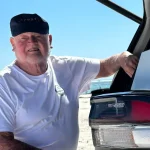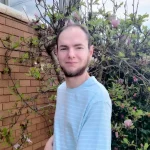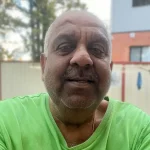Jake Rance – The Heart of our Family
Our mother’s death was not only deeply distressing but utterly unexpected. She’d lived a virtually illness-free life and looked a picture of health until the day of her death. She died from a dissecting aortic aneurysm — or more precisely, a dissection of the aortic root. Six years later, while on holiday in Australia, our maternal aunt was admitted to hospital with mildly distressing symptoms, none of them seemingly cardiac related. Some hours after admission she lost consciousness and two days later she died. The cause, once again, was a dissecting aortic root — a ‘Type A’ dissection to those in the trade.
For my two younger brothers and me it became increasingly clear that losing two adored members of our family had not only left a gaping emotional hole, but a genetic legacy. Following our aunt’s death, the intensive care consultant who had cared for her with such compassion and commitment, now strongly counselled us to pursue our own cardiac investigations. Taking his advice, I found myself several months later in the consulting rooms of the inimitable Professor Richmond Jeremy, a specialist in aortic disease. Early the next year our middle brother Jason followed suit.
Our mother Jeannie had died in October 2008, our Aunt Val in August 2014. It was now late 2015 and both Jason and I had been in Richmond’s care for roughly a year. And we were faced with a dilemma. While Western medicine is a remarkable science, and no more so than in matters of the heart, the human body defies even the most carefully calculated attempts to predict the future. Scans of both our aortic roots revealed a degree of dilation nominally outside the bounds of ‘normal’, intimating a possible weakness in the connective tissue but not definitively so. Meanwhile our young brother Tim, a doctor in Brisbane, had painstakingly tracked down both Jeannie and Val’s medical histories. In both cases, neither of their aortas had been overly dilated either. We were not sure how to proceed.
Sensing our concerns were best answered by someone with extensive and literal ‘hands on’ experience, Richmond referred us to Professor Paul Bannon, a cardiothoracic surgeon with impeccable credentials and particular expertise in aortic root surgery. Furnished with our various scans and our burgeoning cardiac pedigree, Jason and I met with Paul to discuss our options. Taking into consideration our family history plus the presence of aortic dilation (albeit relatively mild), Paul made it clear that surgery was less a matter of if than when. By the end of our first meeting potential dates for surgery had been discussed. In the following weeks both Jason and I returned with our respective partners to discuss any residual concerns with Paul, confirm dates and begin the administrative process.
It was decided that as I was the eldest it was only fair that I go first! My operation was set for January 6th 2016, only a few months away, and Jason’s for just six weeks later. Ultimately both of us found that making the decision to operate was not a difficult one: if intervention was inevitable at some point then better now while we were both otherwise healthy and young(ish)! For although we were both symptom free we had also witnessed firsthand the catastrophic outcome once dissection occurs. And besides, both our mother and aunt had also been symptom free until their final hours.
Several weeks prior to admission I attended an induction day organised by the Royal Prince Albert (RPA) hospital for incoming cardiac surgery patients. The day involved finalising administrative details, routine pathology screening (for HIV etc.), lung function tests, a patient information seminar, and one-to-one discussions with an anaesthetist. During that week I was also admitted to RPA for a coronary catheter angiogram, a day procedure used to assess the health of a patient’s coronary arteries. With all boxes ticked it was now just a matter of waiting patiently (and alcohol-free) for Christmas and the New Year to pass.
The day of my surgery RPA was holiday quiet. I felt ready; relaxed and optimistic. Changing into my hospital gown, I settled aboard a patient transfer trolley, and after a brief wait, was wheeled into the operating anteroom. Having removed my contact lenses for surgery I could see little beyond the passing shapes of busy theatre staff. An anaesthetist kindly covered me with extra blankets, explaining that the area was kept icy cold to prevent surgeons from getting too sweaty under the harsh operating lights.
The ‘David Procedure’ (so-named after its inventor) is an audacious, technically exacting operation. Put simply, it involves removing the ‘root’ of the patient’s aorta (the body’s major artery) and replacing it with a synthetic sleeve made of a stocking-like material, Dacron. A remarkable feat when you consider that normally, with every beat of the heart, oxygenated blood is pumped under pressure through the aorta to the network of smaller arteries that feed the body. Such a procedure would simply be unthinkable without the ingenuity of the heart-lung machine, a cardiopulmonary bypass that takes over the function of the heart and lungs during surgery. Fortunately, my aortic valve was sufficiently healthy not to need replacing, sparing a further complication for both the surgeon and me. Bovine or mechanical are the two choices of valve material and both have their drawbacks. While the animal tissue valve requires changing (via surgery) every ten years or so, the mechanical version necessitates a lifetime on warfarin, a blood thinning medication. Nonetheless, the already demanding nature of my operation was compounded by the inclusion of an additional procedure — a ‘surgical ablation’ — used to treat atrial fibrillation (AF), a cardiac arrhythmia I’d developed unrelated to the aortic issue. All-told, an impressive five to six hours on the table!
I woke up in intensive care a mess of catheters, tubes, drains, and drips. I was also awash with fentanyl, an analgesic reputedly a hundred times stronger than morphine. And I needed it! The ‘sternotomy’ — the incision that ran down the middle of my chest from just below the clavicle to last of my ribs —was the cause of the pain. With the fentanyl infusion it was manageable until I moved, and then it felt like my lungs had caught on something sharp and that holding my breath was the only way to survive the excruciating pain. Coughing, sitting up, walking … these were all activities that staff gently cajoled and supported me through; simple tasks seemingly insurmountable at times.
Three days in intensive care was followed by four on a post-operative ward. Time on the ward was tough. I appreciated the medical imperative to be there, yet the mix of pain, boredom and my sense of physical ‘neediness’ felt intolerable at times. I was spoilt with loving visitors and the expert care of the nurses and doctors, but I was ready for home. Seven days after surgery I was free to go. I could walk and shower without assistance by then, but the sense of utter exhaustion, physical fragility and emotional vulnerability remained. To allow my chest to ‘re-knit’ I was under strict instructions not to lift anything much more than a few kilos: making my bed, shopping, laundry, were all well beyond me. So, for the next few weeks my gorgeous partner and a dear friend took turns in sharing my tasks of daily living!
Six weeks after my surgery, it was Jason’s turn. He too was under the excellent care of Professors Jeremy and Bannon. And once again brother Tim flew down to be with us. Visiting Jason in RPA’s intensive care and then later in the same post-operative ward — my ward — felt surreal. Jason’s recovery over the first few weeks was tricky; a persistent high temperature and suspected infection requiring a reluctant re-admission to hospital. Nonetheless he soon felt robust enough to join me twice a week at cardiac rehab, a fabulous service offered for free by most large public hospitals. I cannot overstate not only the physical but the psychological merit of sharing one’s recovery with others in the same post-operative boat.
Nearly a full 12 weeks after surgery I returned to work. At my six-week review Paul had recommended I take as much time off as work permitted. I need no convincing: I was starting to relish my taste of early retirement! I was also incredibly fortunate to have such a generous and supportive workplace. Now, over a year since my surgery, my once impressive scar has faded, and so too has that sense of physical and emotional vulnerability that had once been my constant companion. Jason too has made a full recovery. We have both been the beneficiaries of not only the excellent care of two fine doctors, but blessed to live in a part of the world where a medical system affords us (all) access to their expertise.
Nonetheless, elements of our family’s story remain unresolved. My genetic testing revealed nothing that might assist brother Tim with his decision about future surgery, nor inform potential courses of action for Arish, my cherished 10-year-old, or his five cousins. The imperative to ensure ongoing research, alongside innovative practice, is clear. In the meantime, for Jason and me, if the deaths of our darling mother and beloved aunt have a silver lining, it’s that our own prognoses are now shiny bright!












